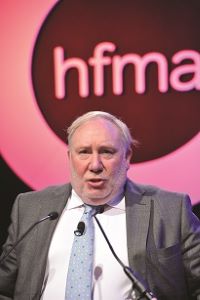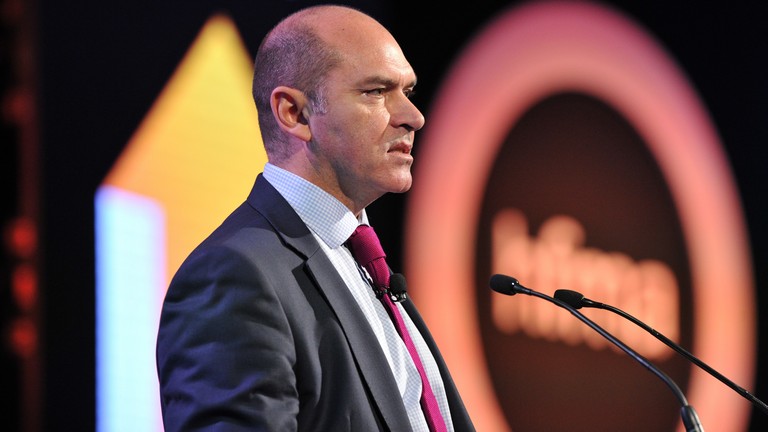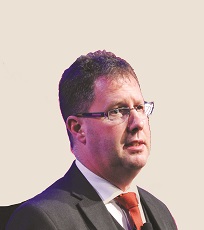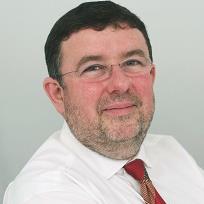News / Promising Q1 position tempered by demand fears
 In his quarter one report , Bob Alexander, NHS Improvement deputy chief executive/ executive director of resources, said the overall provider deficit for the quarter was £461m, £5m better than plan. However, this was achieved with £450m from the sustainability and transformation fund, paid to trusts that achieved their control total and agreed a specific plan for some waiting time standards.
In his quarter one report , Bob Alexander, NHS Improvement deputy chief executive/ executive director of resources, said the overall provider deficit for the quarter was £461m, £5m better than plan. However, this was achieved with £450m from the sustainability and transformation fund, paid to trusts that achieved their control total and agreed a specific plan for some waiting time standards.
NHS Improvement said the Q1 results showed that trusts were making progress in stabilising and improving their financial positions – demonstrated by falling monthly agency staffing costs since last April.
It said trusts were on course to cut £1bn this year from their combined annual agency staff costs, while the aggregate pay bill (which includes agency costs) was £9.8m less than the Q1 plan. The number of trusts reporting a year-to-date deficit fell from 190 in Q1 2015/16 to 153. At the end of 2015/16, 157 had a deficit.
While the headline position is improved, there will still be areas of concern for NHS Improvement, especially rising demand. In Q1 there were an additional 300,000 A&E attendances compared with the same period last year, and the number of emergency patients that needed to be admitted also rose by over 6%. Of the 214 trusts that accepted their control total, 29 did not meet their first quarter targets to gain access to STF payments.
NHS Improvement said work was needed on non-pay costs and efficiency. Non-pay costs remains the biggest area of overspend, with drugs and clinical supplies £44m over plan, accounting for 60% of the non-pay overspend.
NHS Improvement said a new purchase price index benchmarking tool, to be rolled out shortly, should ensure that trusts ‘realise material non-pay savings’ in the second half of the year.
There was a £45m shortfall in cost improvement plans. And some providers were indicating that their outturn could be worse than plan. Without further action, this would increase the planned deficit from £580m to £644m. The report acknowledged actions announced over the summer to reduce the overall deficit (on pay growth, back office and pathology consolidation and unsustainable services) and strengthening financial performance and accountability would not have had an impact on the Q1 figures. These aim to take the overall deficit down to £250m.
A series of measures will be used to help trusts tackle variance to plan, such as:
- Ensuring consistency of forecasting, which would improve under the new single oversight framework
- Engagement by regional finance teams to establish corrective actions
- Exploring the potential for a small number of organisations to increase their potential surplus.
Mr Alexander acknowledged the Q1 figures were an early indicator of financial performance and that ‘the provider plan profile has a challenging trajectory for the remainder of this year’.
But he added: ‘It should also be recognised many providers are making demonstrable financial progress and this is a promising start for the sector. Indeed, it is noticeable the sector’s achievement of meeting its aggregate financial plan for the quarter bucks the trend of recent periods being significantly off plan at Q1.’
Provider figures reaction
 NHS Improvement said 2016/17 was a crucial
NHS Improvement said 2016/17 was a crucial
year for the NHS as it unveiled the Q1 provider figures. ‘The results have demonstrated providers are up for the challenge and are starting to get a grip on their finances,’ said chief executive Jim Mackey (right). ‘It’s early days – and there is still much to be done – but the figures show providers are meeting some of the ambitious plans that trusts’ boards have signed up to. This is a promising start to the year.’

The HFMA was encouraged by the improvement against plan. But association director of policy Paul Briddock (right) warned that the results should only be seen as a ‘work in progress’. ‘The demands on the NHS are extremely high, with waiting times struggling to hit targets,’ he said. ‘We must move forward with caution, but it is clear that finance directors are tackling the challenge head on and setting good foundations for the coming year.’
NHS Confederation chief executive Stephen Dalton said it was too soon to see the impact of the extra money. ‘As the NHS moves on from a terrible financial year, we must use this critical opportunity to get the NHS back on track for vital transformation plans,’ he said. ‘Cuts to social care and public health, as well as increases in employers’ pension contributions, have all heaped unplanned pressure on the NHS.’
 NHS Providers said slowing the
NHS Providers said slowing the
‘runaway train’ of provider deficits was ‘positive news’. But chief executive Chris Hopson (right) said a finance director survey showed four in 10 would be unable to sustain this. ‘We’ve only just kept our heads above water because we have transferred the investment intended to fund long-term transformation into reducing the deficit most NHS trusts face.’
Related content
We are excited to bring you a fun packed Eastern Branch Conference in 2025 over three days.
This event is for those that will benefit from an overview of costing in the NHS or those new to costing and will cover why we cost and the processes.